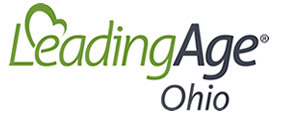Complete Story
10/23/2025
House Advances Series of Property Tax Bills That Could Affect Senior Services Funding
Ohio lawmakers continued their focus on property tax reform this week, advancing several bills that together represent one of the most significant overhauls of the state’s property tax system in decades.
Last week, the Ohio House of Representatives approved House Bill 129 and House Bill 309, both considered by the House Ways and Means Committee. The measures aim to modernize levy calculations and strengthen local oversight of property tax collections.
House Bill 129 modifies how school districts calculate the “20-mill floor” and allows fixed-sum property tax levies under limited conditions beginning in tax year 2026. These levies—restricted to five years and nonrenewable—may be used only for current operating expenses when a district faces fiscal distress or a declared emergency. The bill passed 81–16.
House Bill 309, passed 77–19, gives county budget commissions expanded authority to review and adjust local levy collections to ensure revenues align with demonstrated financial need. The bill also requires commissions to approve new voted levies without modification for their first five years and directs the Tax Commissioner to annually adjust fixed-sum levy rates to maintain approved revenue levels.
This week, lawmakers added another major component to the discussion with passage of House Bill 186, sponsored by Representatives Jim Hoops and Dan Thomas. The measure places an inflationary cap on increases in property tax revenue for school districts on the 20-mill floor and provides state-funded credits to offset the impact of retroactively applying that cap to property owners. The bill passed the House 72–23 after moving through both the Ways and Means and Finance Committees earlier in the week.
Paired with House Bill 335, which applies a similar inflationary cap to “inside millage” across local governments, HB 186 is intended to limit future tax spikes tied to rising property values. Supporters described the legislation as the most extensive property tax reform effort in half a century.
While these measures focus on schools and local taxing authorities, they could have downstream effects for county senior services levies, which fund programs for older Ohioans. Increased review from county budget commissions and caps on local millage growth could limit revenue flexibility for levies that support aging services, transportation, and home- and community-based programs. Depending on how these provisions are implemented, Area Agencies on Aging (AAAs) and local partners may experience additional scrutiny of fund balances or reduced capacity to expand services in response to rising costs.
Conversely, the bills could have a positive impact on independent living and other senior living communities, which have felt the increased burden of property tax inflation in recent years.
Together, the passage of HB 129, HB 309, and HB 186—along with companion legislation such as HB 335—signals lawmakers’ growing urgency to address property tax pressures across Ohio. LeadingAge Ohio will continue to monitor these developments as they move to the Senate and advocate for policies that preserve the stability of county senior services levies and ensure continued investment in local aging services. For more information, contact Eli Faes at efaes@leadingageohio.org.
